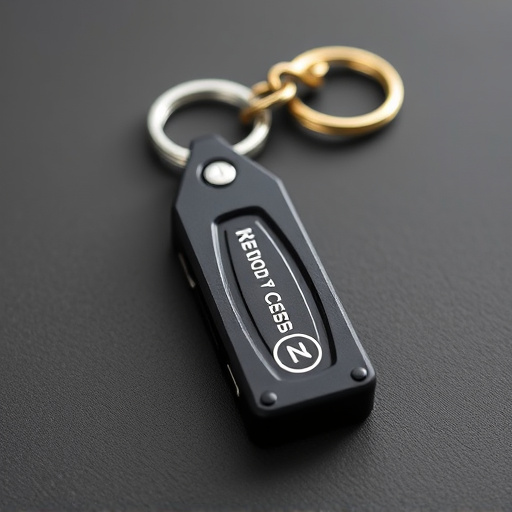Keychain weapon concealment leverages customizable pocket clips to discreetly secure weapons to everyday carry items like keychains, providing an extra layer of personal safety in high-risk scenarios. By integrating keychain pressure point defense moves, individuals gain confidence and can neutralize threats efficiently with split-second reactions, particularly useful in tight spaces or unexpected attacks. Legal considerations and regular practice are crucial for effective use.
In today’s world, personal safety is a top concern, leading many individuals to explore innovative self-defense solutions. One such discreet option gaining traction is keychain weapon concealment with pocket clips, offering a unique approach to pressure point defense moves. This article delves into the art of integrating a compact weapon into a keychain design while exploring the psychology behind effective self-defense tactics. From understanding legal considerations to crafting optimal pocket clips for enhanced concealment, we guide you through the intricacies of keychain pressure point defense moves.
- Understanding Keychain Weapon Concealment: A Brief Overview
- The Psychology of Pressure Point Defense Moves
- Designing an Effective Pocket Clip for Enhanced Concealment
- Legal and Safety Considerations for Self-Defense Keychains
Understanding Keychain Weapon Concealment: A Brief Overview
Keychain weapon concealment is a discreet self-defense strategy that leverages compact and innovative design. This method involves securing a small, often customizable pocket clip to everyday carry items like keychains, allowing for quick access to a concealed weapon in case of emergency. The concept behind this approach is to provide individuals with an extra layer of personal safety, especially in high-risk scenarios or when traveling light.
By integrating a keychain pressure point defense move into one’s routine, users can gain confidence and peace of mind. These moves focus on strategic points on the body that, when targeted, can incapacitate or disrupt an attacker. With proper training, individuals can transform everyday objects into potent tools for self-defense, ensuring they’re prepared should they ever need to defend themselves in a pinch.
The Psychology of Pressure Point Defense Moves
The psychology behind keychain pressure point defense moves is a fascinating aspect of self-defense strategies. These techniques, often employed by martial artists and law enforcement officers, leverage specific points on the human body to incapacitate or control an opponent quickly. By understanding the body’s vulnerabilities, practitioners can develop split-second reactions to neutralise threats efficiently. The concept draws from centuries-old martial arts traditions, where every movement is calculated to maximize impact with minimal effort.
Keychain pressure point defense moves offer a practical approach to personal safety. They enable individuals to defend themselves in tight spaces or when facing unexpected attacks. The key lies in identifying vital areas such as the eyes, throat, groin, and pressure points along the arms and legs. Training in these techniques fosters awareness and confidence, allowing users to respond instinctively during high-stress situations. This mental preparation is crucial for turning a potential life-threatening encounter into a manageable one.
Designing an Effective Pocket Clip for Enhanced Concealment
When designing an effective pocket clip for a keychain weapon concealment, the primary focus should be on achieving seamless integration and optimal concealment. The pocket clip must be crafted with precision to ensure it securely holds the keychain in place while allowing for quick and discreet access during pressure points in self-defense situations. A well-engineered clip design incorporates subtle curves and a non-intrusive profile, enabling users to carry their self-defense tool without drawing unnecessary attention.
Keychain weapons are versatile tools that require an innovative approach to clipping and concealing. Incorporating the principles of pressure point defense moves in the clip’s design enhances its functionality. By understanding common defensive positions and hand movements, designers can create a pocket clip that seamlessly fits into these actions, ensuring the weapon remains secure yet readily accessible when needed most. This blend of practical self-defense strategies and thoughtful design creates an effective solution for those seeking discreet personal protection.
Legal and Safety Considerations for Self-Defense Keychains
When carrying a keychain designed for self-defense, it’s crucial to understand legal and safety considerations. In many jurisdictions, open display of weapons is restricted, even for self-defense tools like keychains. Users must ensure they comply with local laws and regulations, as penalties for illegal weapon possession can be severe. Additionally, the effectiveness of a keychain pressure point defense move relies not just on the design but also on the user’s training and proficiency.
Safe use requires understanding that these devices are meant for specific self-defense scenarios, not everyday carry or aggressive situations. Proper training in keychain pressure points ensures that users can apply force effectively while minimizing risk to themselves and others. Regular practice is essential to maintain skills, especially as keychains offer a compact but potentially powerful tool that demands precision and control.
In conclusion, a well-designed keychain weapon concealment pocket clip can significantly enhance personal safety by allowing for discreet self-defense. By understanding the psychology behind pressure point defense moves and considering legal and safety aspects, individuals can make informed choices when opting for such tools. Incorporating these insights into the design process ensures an effective and responsible solution for those seeking to protect themselves in various situations. Keychain Pressure Point Defense Moves, when combined with proper training and awareness, offer a practical approach to self-defense that fits seamlessly into daily life.
